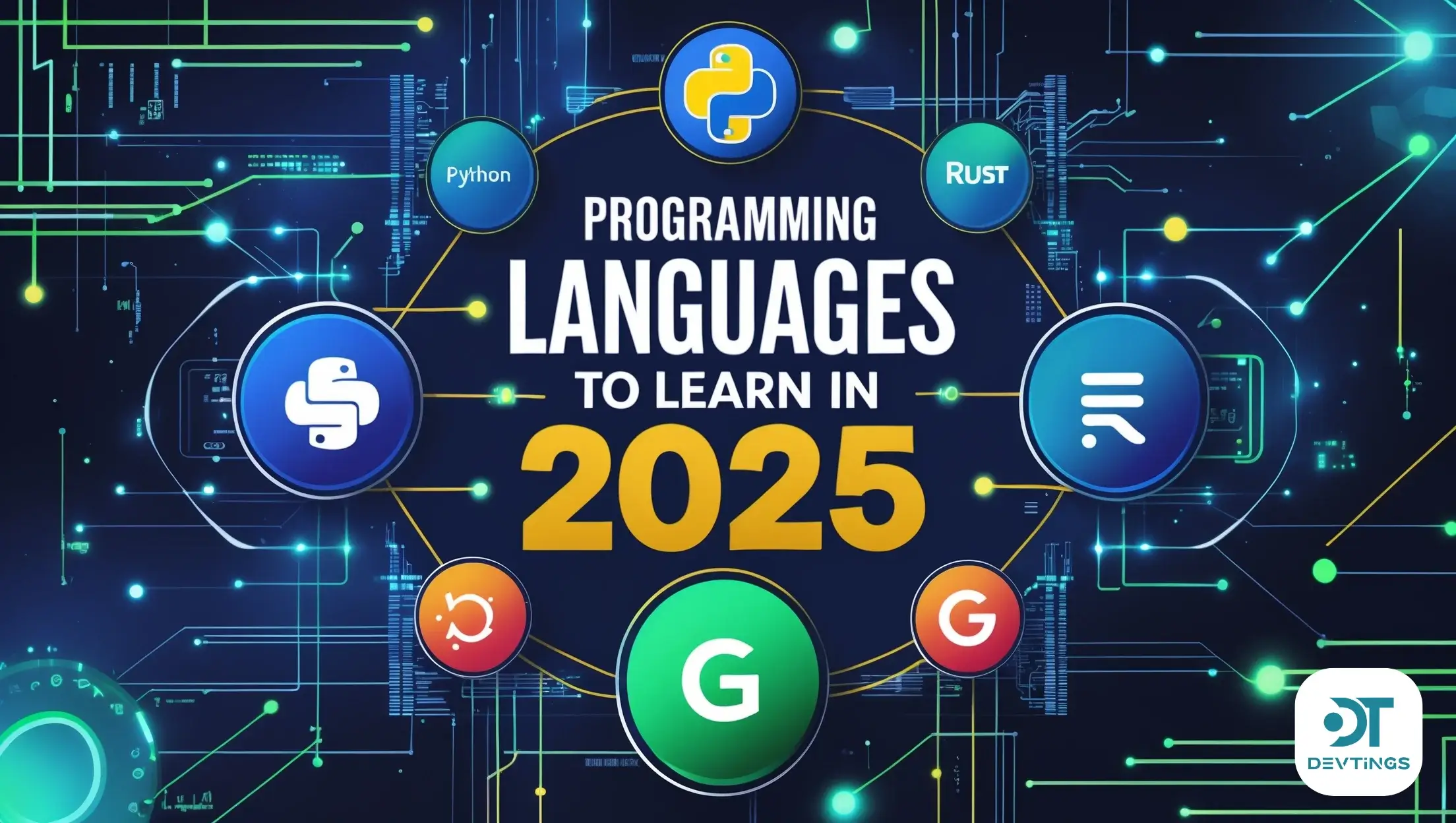Introduction
The software development world will never be the same again, in 2025 the programming world is still changing quickly, new technologies and frameworks will still shape the future of software development. In order to stay competitive, developers are compelled to tackle the languages that occupy the industry’s stage front and the ones that are stable and innovative. This article will show you the top 5 programming languages to learn in 2025 for aspiring or even experienced developers who want to grow their careers and become relevant in the technology space.
Why Learning the Right Programming Language Matters?
The right programming language can take you to where you want to be in your career. It impacts the types of activities you can take up within those industries … as well as your earning levels. Factors to consider include:
- Demand in the Job Market
- Community Support
- Future Growth and Versatility
- Ease of Learning
Programming Languages to Learn in 2025
Python: The All-Rounder
Python remains one of the most sought-after programming languages in 2025, thanks to its versatility and simplicity.
Why Python?
- AI and Machine Learning Dominance: Python’s frameworks like TensorFlow, PyTorch, and Scikit-learn are leading in AI/ML.
- Data Science and Analytics: Widely used for data manipulation and visualization through libraries like Pandas and Matplotlib.
- Web Development: Frameworks like Django and Flask streamline backend development.
- Ease of Learning: Its intuitive syntax is ideal for beginners and professionals alike.
Industries Using Python
- FinTech
- Healthcare
- E-commerce
JavaScript: The King of Web Development
JavaScript continues to be the backbone of interactive web development, expanding into new territories in 2025.
Why JavaScript?
- Full-Stack Capabilities: With Node.js, JavaScript powers both frontend and backend development.
- Growing Ecosystem: Frameworks like React, Vue.js, and Angular remain dominant.
- Cross-Platform Development: Leveraging frameworks like Electron for desktop apps and React Native for mobile apps.
- Web3 and Blockchain Integration: JavaScript is at the core of smart contract development and decentralized apps (dApps).
Industries Using JavaScript
- SaaS and Enterprise Solutions
- Game Development
- Blockchain and Cryptocurrency
Rust: The Performance Powerhouse
Rust’s popularity continues to grow in 2025 as it bridges the gap between safety and performance.
Why Rust?
- Memory Safety: Rust eliminates common bugs like null pointer dereferences and data races.
- High Performance: Ideal for systems programming, game engines, and performance-critical applications.
- Active Community: Rust’s ecosystem, including tools like Cargo, fosters rapid development.
- Adoption by Big Tech: Companies like Google and AWS are using Rust for scalable and efficient solutions.
Industries Using Rust
- System Programming
- Game Development
- Cloud Computing
Kotlin: Android Development’s Favorite
Kotlin, officially endorsed by Google, remains a dominant force in mobile app development.
Why Kotlin?
- Interoperability with Java: Kotlin seamlessly integrates with existing Java codebases.
- Modern Syntax: Its concise and expressive syntax speeds up development.
- Multiplatform Support: Kotlin Multiplatform enables code sharing between Android, iOS, and web.
- High Demand in Mobile App Market: Android’s continued dominance keeps Kotlin developers in high demand.
Industries Using Kotlin
- Mobile App Development
- EdTech
- Entertainment and Media
Go (Golang): Simplicity Meets Scalability
Go, developed by Google, is a preferred language for cloud-based solutions and distributed systems in 2025.
Why Go?
- Concurrency Support: Go’s goroutines simplify concurrent programming.
- Fast and Lightweight: Ideal for microservices and scalable APIs.
- Adoption in DevOps: Tools like Kubernetes and Docker are built in Go.
- High Demand in Cloud Computing: Essential for server-side and cloud-native applications.
Industries Using Go
- Cloud Services
- DevOps
- E-commerce Platforms
Comparison Table: Top 5 Programming Languages in 2025
| Language | Best For | Notable Frameworks/Tools | Difficulty |
| Python | AI/ML, Web, Data Science | TensorFlow, Django, Pandas | Easy |
| JavaScript | Web, dApps, Full-Stack | React, Node.js, Vue.js | Moderate |
| Rust | Systems, Performance | Cargo | Hard |
| Kotlin | Mobile Apps, Multiplatform | Android Studio | Moderate |
| Go | Cloud, Microservices | Kubernetes, Docker | Easy |
FAQs
- What is the easiest programming language to learn in 2025?
Python is considered the easiest language to learn due to its readable syntax and vast resources for beginners. - Which language is best for AI and machine learning?
Python leads in AI and ML development, thanks to libraries like TensorFlow and PyTorch. - Is JavaScript still relevant in 2025?
Yes, JavaScript is essential for web development, and its frameworks power modern web and mobile applications. - Why should I learn Rust in 2025?
Rust is perfect for developers focused on performance, safety, and scalability, particularly in system-level programming. - What makes Go a top language in 2025?
Go’s simplicity, concurrency support, and widespread adoption in cloud computing make it a go-to language. - Which language is ideal for Android development?
Kotlin is the preferred choice for Android development due to its modern features and official support from Google.
Conclusion
For developers that dive into investing the right skill in 2025, the programming landscape offers vast amounts of opportunities. The top languages shaping the tech industry are Python, JavaScript, Rust, Kotlin and Go. If you’re a beginner, or an experienced developer, learning these languages will give you the knowledge you need to get ahead and have a vibrant and fulfilling career.







